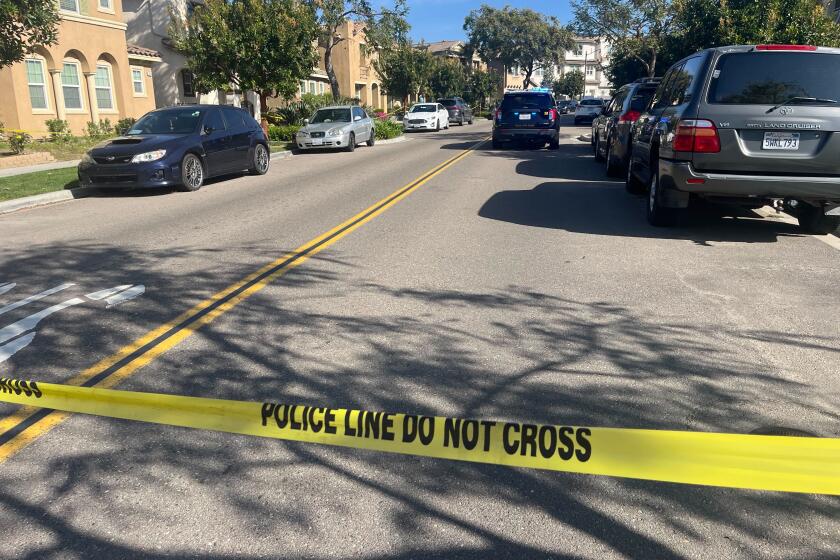Commentary: Why community college reforms are needed for student success
The community college system that was supposed to lift me up could easily have defeated me. Fortunately for me, my family and my future, attending my hometown community college for two years ended up paving the way for opportunities that may never have been.
Why? Because today’s California Community Colleges system is focused on student success and is making bold reforms to get us to the finish line without breaking us. Isn’t that what education should be about?
It starts with the system’s Vision for Success that puts students’ needs and outcomes first and foremost. The plan has the unwavering commitment of Chancellor Eloy Ortiz Oakley and the Board of Governors. It is a guide to ensure that students of all backgrounds achieve their educational goals by increasing degree and certificate completion, improving transfer rates to four-year institutions, reducing excess unit accumulation, closing achievement gaps and ultimately helping students get jobs in their area of study.
The Faculty Association of California Community Colleges (FACCC) represents over 9,000 members as a statewide professional membership association advocating solely for community college faculty.
Community college students come in with different intentions — to attain an associate’s degree, a certificate, to transfer or to discover what they love. But it takes too long to get there, sometimes four to six years to complete a two-year program. It is alarming that across the country, only 38 percent of students actually complete their program, as an April 2019 Century Foundation report found — a clear argument for more resources and better approaches. Current outcomes are unacceptable, and the recent faculty association vote of no confidence in the state Chancellor’s Office is misplaced.
One of the main solutions to a major systemic flaw was Assembly Bill 705 that got rid of assessment tests and enabled students to enter math and English classes based on grade point averages and previous knowledge. This alone has helped students reduce the number of classes they take by enabling them to go straight to transfer-level courses, saving them three or more additional years of education.
Similarly, the Guided Pathways initiative caters to students’ educational and career goals from the moment they enter college, and the coming online college, Calbright, will serve working adults who need to manage their own jobs and schedules and attend at their own pace.
Another reform involves the way funding for community colleges is determined. The previous funding formula, based on attendance rather than success, was outdated and hurt our students. By making student outcome and success a piece of the formula, schools are pushed to care about making sure their students complete.
That’s right: The funding formula makes community college education about students.
Arguments that the new funding formula hurts rather than helps student programs is specious. The incorrect assumption that completion rates will stay stagnant rather than improve doesn’t take into account the implementation of both Assembly Bill 705’s remedial improvements and the Guided Pathways.
Students and faculty need to be part of the decision-making process on all these issues. In my home college, when these ideas were introduced, everyone was nervous about the deadlines, but they were enlightened as to the purpose. Leadership included students in the process of change, something I am sad to say many schools do not do.
Faculty members have every right to say they want more consultation, and I agree communication is key, just as faculty are key to education. That’s why Chancellor Oakley regularly travels to campuses to talk to faculty and students alike to make sure the system is doing its best.
But I personally ask the faculty, on behalf of all 2.1 million students in our system, to look at their own schools and ask whether they are doing the same for their students.
Are students on your pathway committees? Your Assembly Bill 705 committees? Are you listening to them or are they just filling a required seat at the table?
For too long, students have been left out of conversations about a system that is supposed to be their chance at economic mobility. A degree or certificate achieved in a reasonable amount of time with the support to do so is preferable to having to drop out with only a feeling of failure hanging on the wall.
The implementation of reforms thus far is changing lives, and the system is finally working for students.
I dream of a system in which everyone works together with a common vision, one that, despite politics and hurt feelings, puts aside differences and sees the outcomes working for students. It is up to us to build the system around our smart, hard-working, capable students. A clear vision is the foundation we not only need but deserve.
Zaragoza is the student representative on the Board of Governors of California Community Colleges and a recent graduate of Modesto Junior College. She is transferring to University of California, Berkeley, this fall to complete her degree.
Get Weekend Opinion on Sundays and Reader Opinion on Mondays
Editorials, commentary and more delivered Sunday morning, and Reader Reaction on Mondays.
You may occasionally receive promotional content from the San Diego Union-Tribune.





